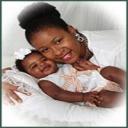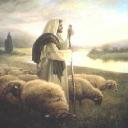Yahoo Answers is shutting down on May 4th, 2021 (Eastern Time) and beginning April 20th, 2021 (Eastern Time) the Yahoo Answers website will be in read-only mode. There will be no changes to other Yahoo properties or services, or your Yahoo account. You can find more information about the Yahoo Answers shutdown and how to download your data on this help page.
Trending News
Lilith in the Bible?
For the ones that keep saying that Lilith was Adams first wife, can you please show me the verse where she is mentioned?
I have read the Bible quite a few times and I have never seen her name anywhere so where did the name come from and what scripture?
15 Answers
- James OLv 71 decade agoFavorite Answer
Not there
Some read into the end of Gen 1 'male and female he created them' to mean that there was a fromer Mrs Adam before Eve but it is just reading into a text what is not there
- Anonymous1 decade ago
There are legends that Adam had a wife before Eve who was named Lilith, but this is not found in the Bible. The legends vary significantly, but they all essentially agree that Lilith left Adam because she did not want to submit to him. According to the legends, Lilith was an evil, wicked woman who committed adultery with Satan and produced a race of evil creatures. None of this is true. There is no biblical basis whatsoever for these concepts. There is no one in the Bible named Lilith.
The passage most often pointed to as evidence for Lilith is Isaiah 34:14, which in the NRSV reads, "there too Lilith shall repose." This is a poor translation. Every other major translation of the Bible reads something to the effect of "night creature" or "screech owl." Even if "demon monster named Lilith" was the proper translation of the Hebrew word, Adam is nowhere even hinted at in this passage or its context. Whatever the Lilith was, it is not given any connection whatsoever to Adam or Creation.
Another commonly used support for Lilith is the differing Creation accounts in Genesis chapters 1-2. Some claim that the woman in Genesis 1 was Lilith, with the woman in Genesis 2 being Eve. This is completely ludicrous. Rather, Genesis chapter 2 is a "closer look" at the creation of Adam and Eve as recorded in Genesis chapter 1. The Bible specifically says that Adam and Eve were the first human beings ever created (Genesis 1:26-28; 2:18-25). This "Lilith" myth is popular in some radical feminist movements because Lilith is an example of a woman refusing to submit to male headship. While there are myths outside of the Word of God regarding Lilith, her complete absence from Scripture demonstrates that she is nothing more than a myth.
- IsabellaLv 61 decade ago
"Lamia" represents the original Lilith, a spirit of the night who in Hebrew legend is the demon wife of Adam.
Gnosticism
A collective name for a large number of greatly-varying and pantheistic-idealistic sects, which flourished from some time before the Christian Era down to the fifth century, and which, while borrowing the phraseology and some of the tenets of the chief religions of the day, and especially of Christianity, held matter to be a deterioration of spirit, and the whole universe a depravation of the Deity, and taught the ultimate end of all being to be the overcoming of the grossness of matter and the return to the Parent-Spirit, which return they held to be inaugurated and facilitated by the appearance of some God-sent Saviour.
- Lady PrismLv 51 decade ago
Isaah 34:14... she is the screech owl.
Also, this question was asked recently by someone else... here is a link to her questions and the many, many answers...
http://answers.yahoo.com/question/index;_ylt=ArO9f...
Lilith is not a Christian figure... she was originally a Sumatran diety and was later embraced by Judaism...
There is one reference to her in the Torah (although the translation makes this reference subjective) and the Talmud has 4 references. The Zohar (Tzohar) has the full story of Lilith... it is part of the Jewish Kabbalah.
- How do you think about the answers? You can sign in to vote the answer.
- Anonymous1 decade ago
She is not in the bible, she is the subject of stories from oral tradition. In the Hebrew tradition, prior to widespread literacy, many of the stories of the bible were shared orally. This led to many other stories being told based on the stories in the bible. This tradition is called 'Midrash'.
- WisdomLv 61 decade ago
Although she is not in the bible an explanation appears in some books that the name belongs to a night bird.
But if we asked Adam, he said on being presented with Eve; a woman by God, "At last bone of my bone, and flesh of my flesh', and I shall call her woman because she was taken of me..................I shouldn't quote since I wasn't there.........
There seems to be some controversy about Lilith being unsuitable to Adam...........Who besides God can say what happened more than 6 thousand years ago?
- Saint LilithLv 71 decade ago
Well in the Original version of the story of Creation Lilith was Adam's first wife. She left after refusing to be submissive to Adam. After she left god made Adam a nameless second woman then finally Eve.Lilith was edited out probably because she was not a good role model for the women of the 1100s. Now she only gets a small cameo as a screech owl.
- strpentaLv 71 decade ago
It's a misguided effort at explaining why there are two different versions of the creation of woman. The Bible later (Is.) has something about an owl, the Aramaic word was 'Lilit (?)' and that was used to provide the name of the supposedly first wife.
I think the two chapters are about the same event but have slightly different time-lines b/c imperfect people wrote it.
Source(s): skepticsannotatedbible.com - 1 decade ago
Lillith never existed, Adam just got Eve as his wife. The first woman created in Genesis 1 is the same Eve which creation was narrated more in detail in Genesis 2.
The name come from pagan religions, I think from Babylon.
- Anonymous1 decade ago
The Book of Isaiah 34:14, describing the desolation of Edom, is the only occurrence of Lilith in the Hebrew Bible
Dead Sea scrolls
The appearance of Lilith in the Dead Sea Scrolls is somewhat more contentious, with one indisputable reference in the Song for a Sage (4Q510-511), and a promising additional allusion found by A. Baumgarten in The Seductress (4Q184). The first and irrefutable Lilith reference in the Song occurs in 4Q510, fragment 1:
"And I, the Instructor, proclaim His glorious splendour so as to frighten and to te[rrify] all the spirits of the destroying angels, spirits of the bastards, demons, Lilith, howlers, and [desert dwellers…] and those which fall upon men without warning to lead them astray from a spirit of understanding and to make their heart and their […] desolate during the present dominion of wickedness and predetermined time of humiliations for the sons of lig[ht], by the guilt of the ages of [those] smitten by iniquity – not for eternal destruction, [bu]t for an era of humiliation for transgression."
Akin to Isaiah 34:14, this liturgical text both cautions against the presence of supernatural malevolence and assumes familiarity with Lilith; distinct from the biblical text, however, this passage does not function under any socio-political agenda, but instead serves in the same capacity as An Exorcism (4Q560) and Songs to Disperse Demons (11Q11) insomuch that it comprises incantations – comparable to the Arslan Tash relief examined above – used to "help protect the faithful against the power of these spirits." The text is thus, to a community "deeply involved in the realm of demonology," an exorcism hymn.[citation needed]
Another text discovered at Qumran, conventionally associated with the Book of Proverbs, credibly also appropriates the Lilith tradition in its description of a precarious, winsome woman – The Seductress (4Q184). The ancient poem – dated to the first century BC but plausibly much older – describes a dangerous woman and consequently warns against encounters with her. Customarily, the woman depicted in this text is equated to the "strange woman" of Proverbs 2 and 5,[citation needed] and for good reason; the parallels are instantly recognizable:
"Her house sinks down to death, And her course leads to the shades. All who go to her cannot return And find again the paths of life." (Proverbs 2:18-19)
"Her gates are gates of death, and from the entrance of the house she sets out towards Sheol. None of those who enter there will ever return, and all who possess her will descend to the Pit." (4Q184)
However, what this association does not take into account are additional descriptions of the "Seductress" from Qumran that cannot be found attributed to the "strange woman" of Proverbs; namely, her horns and her wings: "a multitude of sins is in her wings." The woman illustrated in Proverbs is without question a prostitute, or at the very least, the representation of one, and the sort of individual with whom that text’s community would have been familiar. The "Seductress" of the Qumran text, conversely, could not possibly have represented an existent social threat given the constraints of this particular ascetic community. Instead, the Qumran text utilizes the imagery of Proverbs to explicate a much broader, supernatural threat – the threat of the demoness Lilith.[citation needed]
Source(s): This myth about a rebellious wife is silly because eve ate the friut and blamed adam, so why was her sin OK and not lilith???









